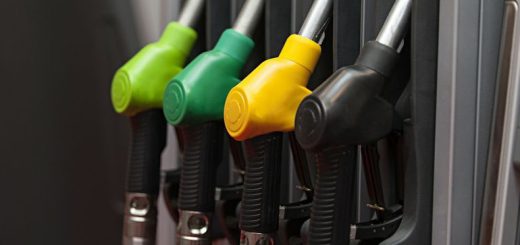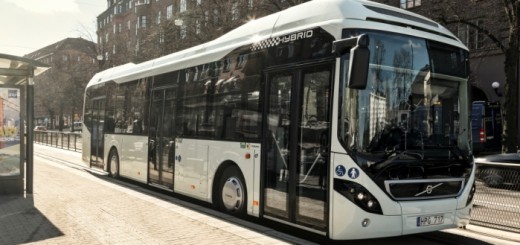Future of EVs in India: Challenges & Opportunities
India aims to be a global leader in electric vehicles, and several steps have already been taken in that direction. Electric vehicle demand has risen in recent years, encouraging many automakers to shift their focus to EVs. Given the potential, several automakers have expressed interest in delivering electric vehicles in India. Along with conventional manufacturers, several startups have emerged to develop a solid ecosystem for EVs in India.
With the rising carbon emissions and fuel prices, customers are also convinced about the benefits of EVs. The penetration of electric vehicles is low when it comes to passenger vehicles. But the two-wheeler and three-wheeler segments have seen a massive rise in terms of these vehicles. This year, many automobile firms in India released electric automobiles.
But what is preventing automakers from launching electric vehicles in India? Market giants such as Tesla and Hyundai have declared that they are keen to launch electric cars in India, but high import duties are their key issue. They have previously written to the government to request that import duties be reduced to boost India’s electric vehicle ecosystem. But is that only the concern?
In this blog, we’ll talk about the opportunities and challenges of electric vehicles in India.
1. Lack of ecosystem.
In comparison to ICE vehicles, the ecosystem necessary for electric vehicles is relatively weak. We have petrol pumps every 3-4 kilometers, but no EV charging stations. When traveling from point A to point B, customers are frequently concerned about battery drain. The country will also need to invest heavily to create a stable ecosystem in which EVs can thrive. Furthermore, available charging stations are concentrated in urban regions, making it difficult for EVs to expand.
2. Consumer perception
Even while demand for electric vehicles has increased, there is still a negative view of them. Customers have been using internal combustion engines (ICE) for a long time, and a complete move to electric vehicles is still a long way off. Customers are concerned about the distance, charging infrastructure, price disparity, and security assurance. Customers will need some time to adjust to this.
India should welcome EV manufacturers worldwide, as it will help the domestic players understand the challenges and how to overcome them.
3. High price
One of the reasons people are hesitant to buy electric vehicles in India is the price gap between electric vehicles and ICE vehicles. Electric vehicles are way more expensive than conventional fuel-powered cars. For example, the Tata Nexon is priced at 7-8 lakhs in India, whereas the Tata Nexon EV is priced at 14 lakhs.
Electric cars are expensive because of the cutting-edge technology, rechargeable lithium-ion batteries, and other car parts. Even when the fuel prices are rising, the cost of electric cars is comparably more than ICE vehicles.
4.Lithium-ion batteries.
Lithium-ion batteries are the primary energy source of EVs. The country doesn’t produce lithium-ion batteries, which is why they rely on the import of EV batteries which have increased the prices of EVs. Because of this unbalanced global concentration, India is forced to import massive amounts of lithium batteries. This is one of the primary reasons India does not produce lithium-ion cells and batteries on a large scale.
5. FAME Policy
In 2015, the government introduced the Faster Adoption and Manufacturing of Hybrid and EV (FAME) plan, which provided subsidies for electric 2- and 3-wheelers, hybrid and e-cars, and buses, with an expenditure of INR 8.95 billion (USD 130 million). The FAME policy did not initially support the majority of electric automobiles. With this in mind, the government has chosen to implement the FAME II policy, which would increase the subsidy and incentive available for electric vehicles.
The new FAME II incentive aims to encourage India to adopt and manufacture electric vehicles more quickly.
6. EVs are at an early phase
In India, EV adoption is still in its early stages; therefore, there aren’t many possibilities. You have hundreds of options if you want to buy a typical fuel automobile or two-wheeler. However, the scenario in the EV category is somewhat different. India’s market leaders have begun to explore the electric vehicle sector, which is still in its early stages. As a result, customers are hesitant to buy electric vehicles.
Opportunities for EVs in India
1. Cost of ownership
The “total cost of ownership” is the key benefit that EVs have over ICE automobiles. The total cost of ownership refers to the costs of purchasing, owning, and maintaining an asset over its lifetime.
In comparison to ICE vehicles, WRI (a global research organization) undertook a comparative analysis of electric two-wheelers, three-wheelers, and passenger vehicles in the Indian market. They discovered that EVs were more cost-effective than ICE cars in the two-wheeler and three-wheeler sectors. Electric cars are also economically viable for business fleet operations, according to the analysis.
2. Cost of maintenance
Compared to ICE vehicles, EVs have lower maintenance costs. This is because electric vehicles have fewer moving components than conventional automobiles. It is said that EV drivers can save a lot of money on vehicle repairs and maintenance. According to a Consumer Reports article, the cost of maintenance for electric vehicles is around $900 per year, but gasoline-powered vehicles cost about $1200.
Consumer Reports evaluated data from thousands of electric and gas-powered vehicles from its 2019 and 2020 dependability surveys. They discovered that electric vehicle owners save an average of 50% on maintenance and repair during the life of their vehicles compared to gas-powered vehicle owners.
3. State Support
Several Indian states have declared their EV policies to encourage the usage of electric vehicles. Not only have the policies been announced, but state governments have also provided incentives and discounts for the purchase of electric vehicles. For example, on August 7, 2020, the Government of the National Capital Territory of Delhi published the Delhi Electric Vehicle Policy to encourage the adoption of electric vehicles in the city.
Dedicated policies to promote the use of electric vehicles have been enacted or notified in 13 states, including Delhi, Andhra Pradesh, and Karnataka (EVs).
4. Low pollution
Electric vehicles have the most fundamental and well-known advantage of emitting less pollution. Several policies to prevent pollution have already been implemented by the government. One such measure was the Vehicle Scrappage Policy, which was implemented this year. State governments are also offering incentives and tax breaks to encourage the adoption of electric vehicles. From 1-8-2019, the GST rate on electric vehicles has been cut from 12 percent to 5%. EVs will help reduce pollution and greenhouse gas emissions such as CO2, which are a major contributor to climate change.
Conclusion
A government-owned company, Energy Efficiency Services Ltd (EESL), has been asked to promote the early adoption of electric vehicles. The newly formed company, which established a reputation for itself by halving the price of LED lights for home lighting by 86 percent, has launched a tender for 10,000 electric automobiles, the world’s largest such purchase. The government’s support of electric vehicles indicates that it wants to reduce oil imports. However, many experts feel that even if we make the transition to electric vehicles, it will take a long time, given that oil consumption will still increase.
Another concern is that EV charging would increase electricity demand, putting India’s already overburdened electrical distribution networks at risk. Something called managed charging should be introduced. So, even if you want to charge, you won’t be allowed to charge at specific hours, or you’ll only be able to charge in particular areas. More work has to be done in the Indian electric vehicle sector to meet the 2030 deadline. Integration and cohesion in this regard is missing. From a macro perspective, we need to get our act together rapidly.




Recent Comments